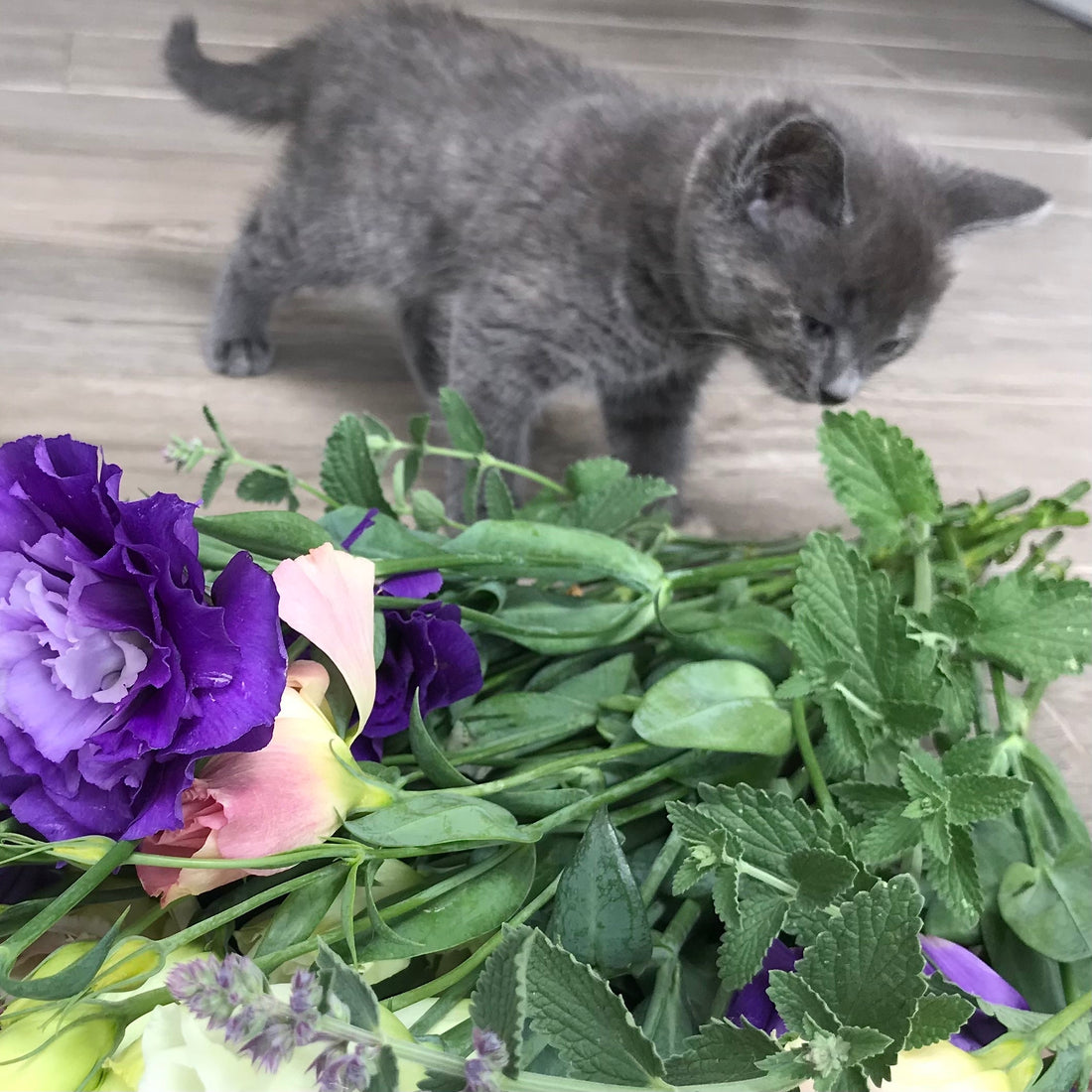
Which flowers are toxic for pets?
Share
What flowers are toxic to pets?
Many plants naturally contain bitter-tasting toxins to deter animals and insects from eating them. A lot of plants can give pets (and people!) a tummy ache if they eat enough of them. This is nature's way of saying 'keep off' and it is usually an effective way to stop animals and people from eating them again. These plants have evolved such a strategy so that they can be left alone to grow and reproduce successfully.
Some plants are more toxic than that, and they can affect different animals in different ways. For example, if consumed, eucalyptus leaves are toxic to cats but they are breakfast, lunch and dinner for a koala! Curiously, some plants that we eat may still be harmful to our pets and vice versa. When it comes to cut flowers there are some to be especially aware of, in particular, lilies.
Ornamental lilies (Lillium sp.) are toxic to cats. These are they sorts of lilies that you typically find at a florist or supermarket. Your cat may not purposefully eat lily petals and leaves but it is possible for them to walk past an open flower and get pollen on their fur. If this is then licked off this can make your cat poorly and even lead to kidney failure and death. You should take your cat to the vet immediately if you think they have ingested any part of a lily.
Conversely, ornamental lilies (Lillium sp.) are classified as non-toxic to dogs but are still thought to sometimes result in negative effects if eaten, such as lethargy or vomitting.
For other cut flowers, it depends a bit on your pet's behaviour as to whether you feel it is safe to have them in the home or not. Pets can be trained to stay on the floor and not jump up on tables, in which case they are unlikely to encounter your plants and flowers. Outdoor cats may be less interested in the plants and flowers you bring into the home, whereas indoor cats may be more curious and keen to nibble on novel plants brought in.
Cats find some plants nutritious and it could be an indication that they are lacking adequate environmental stimulation or essential microvitamins such as Vitamin A and D if they routinely try to nibble on plants in the home. It is possible to provide an indoor cat with a tray of grass to nibble on as a form of environmental enrichment and a source of nutrition.
There is a long list of plants that can cause your pets harm. Fortunately most pets do not make a bee-line for these plants and you do not need to be overly concerned if they exist in your pet's environment, with the exception, I'd say, of lilies. I do grow lilies in our garden but, because we have cats, I now try to cut the lily heads off to use in arrangements out of reach rather than leaving them to flower on the plant. I also remove the pollen from lily flowers carefully before it has a chance to mature and drop.
Below is a list of the flowers that are sometimes used in floristry and in MeadowSweet posies that are thought to be toxic if consumed by cats, dogs and other pets:
List of commonly-used flowers that are toxic for pets if eaten:
Achillea (yarrow), agapanthus, allium, aquilegia, bluebell, broom, calla lily, carnation, chrysanthemums, cyclamen, dahlia, daphne, delphinium, eucalyptus, foxglove, gladioli, gypsophila, hellebore, hyacinth, hydrangea, iris, ivy, lavender, lemon verbena, lily, lily of the valley, lobelia, lupin, mint, mistletoe, narcissi (daffodils), nicotiana, peony, poinsettia, ranunculus, snowdrop, sweet peas, tulip.
And here are some of the known-to-be safe flower species for pets that we also use in are posies.
List of non-toxic flowers for pets:
Alstroemeria, aster, astilbe, camellia, catnip, celosia, cosmos, cornflower, freesia, gerbera, lisianthus, marigold, orchid, pittosporum, rose, rosemary, scabious, statis (limonium), snapdragon, stock, sunflower, zinnia.
The composition of our posies changes every week depending on what we are growing and what is in season locally. If you'd like to find out more about what's in our posies, we post a Weekly Posy Newsletter on our blog which includes all the ingredients we have used in the posy that week.
